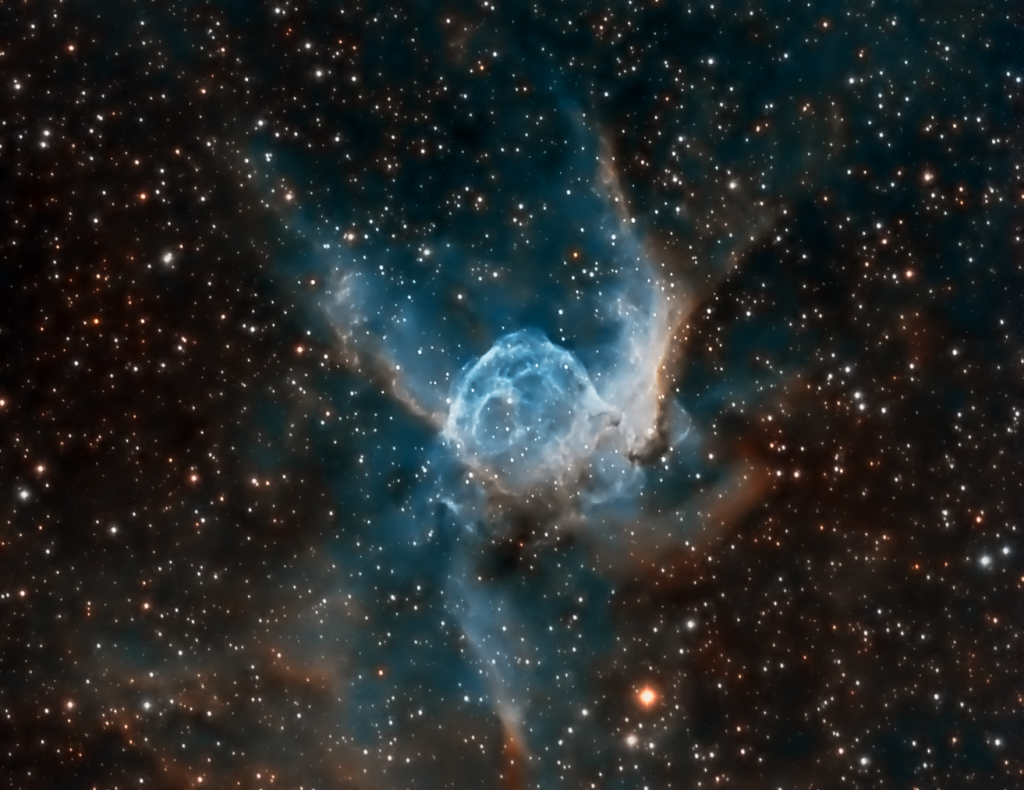
Similar Posts
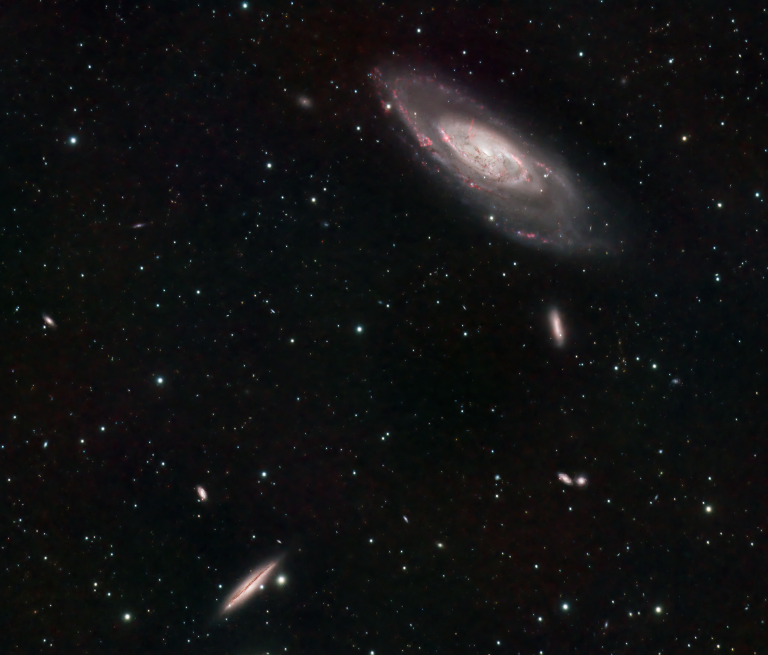
M106 and some of its buddies
The galaxy M106 is an interesting one; it’s large and relatively bright – about the same size as Andromeda. And it’s in a busy part of the sky, within Canes Venatici, with lots of galactic neighbors. This image has been enhanced with Hydrogen emission data; that’s what the red dots and tendrils are. There’s one…
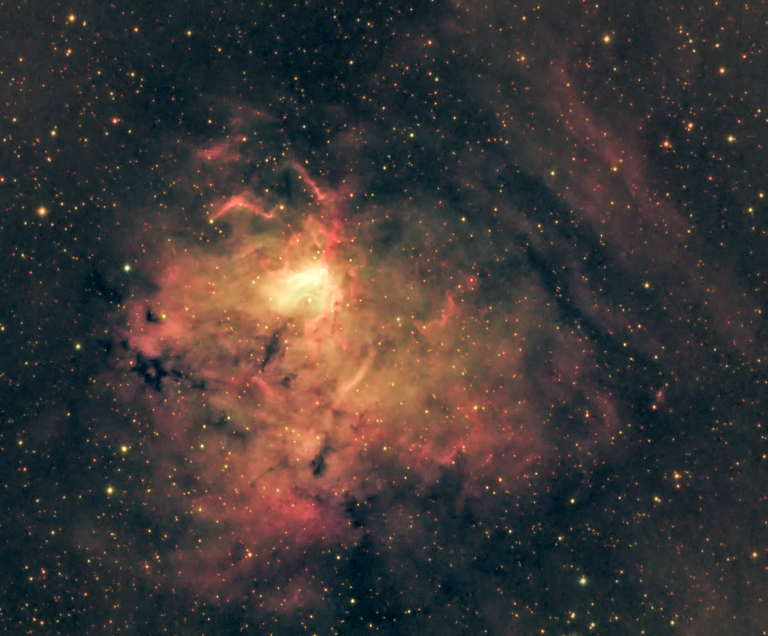
The Nebula with No Name
This dim nebula in the constellation Perseus has no name, apart from its catalog numbers NGC 1491 and LBN 704. I think it deserves one. It reminds me of the Bubble nebula – if you look closely, you’ll see a “bubble” at center being created from the stellar wind of the hot star that is…
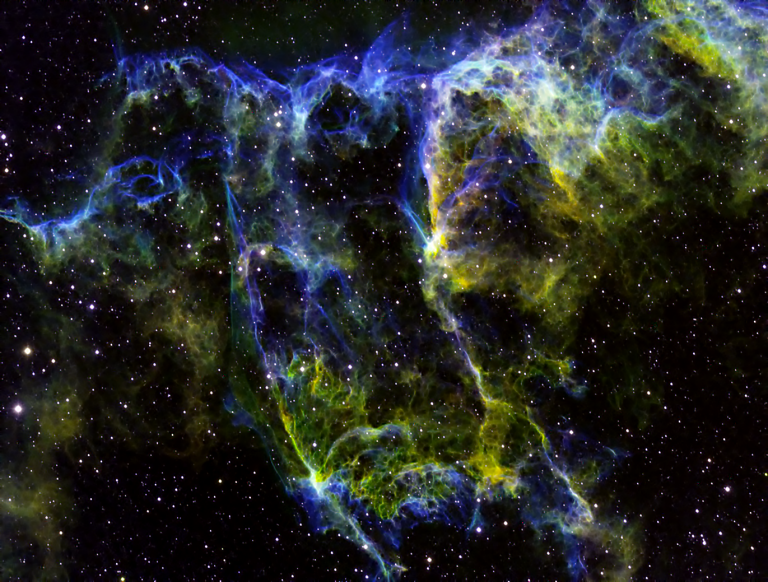
A Spooky Knot in the Veil Nebula
Taken just prior to Halloween in 2018, the southeastern knot of the Eastern Veil Nebula takes on a ghostly appearance when imaged in the Hubble palette with narrowband filters.
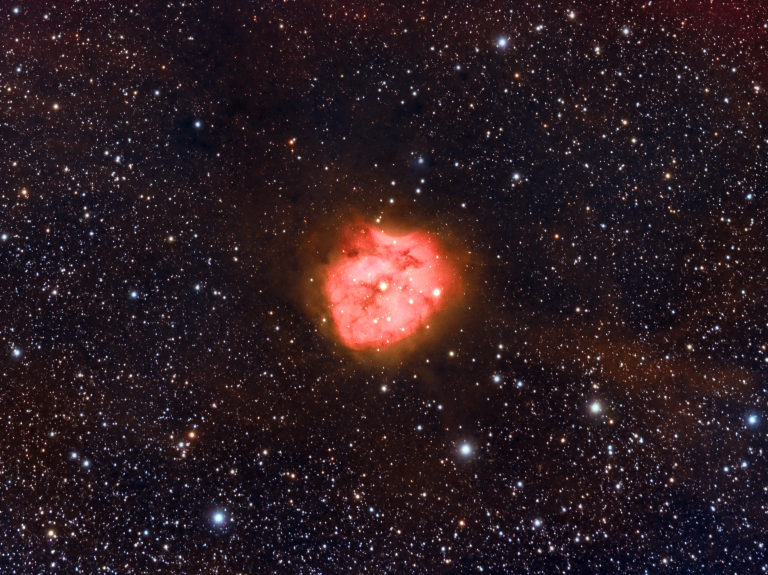
The Cocoon Nebula
The Cocoon Nebula in Cygnus is a compact cloud of Hydrogen, lit up by the bright star in its center. Dust lanes can also be seen across it, obscuring the ionized Hydrogen gas behind them. This object is best imaged during the heart of Summer, which means really challenging conditions here in Florida. High humidity,…
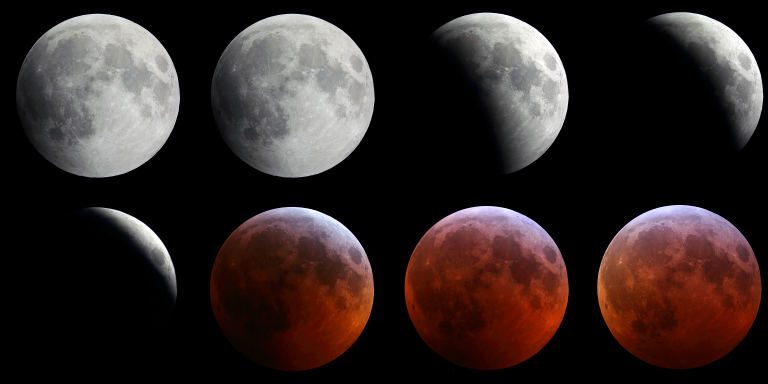
Lunar Eclipse Jan 2019
A progression of photos taken at 15-minute intervals from 10:30 PM to 12:15 AM on the evening of Jan 20-21, 2019. Click to zoom in – there’s a lot of detail!
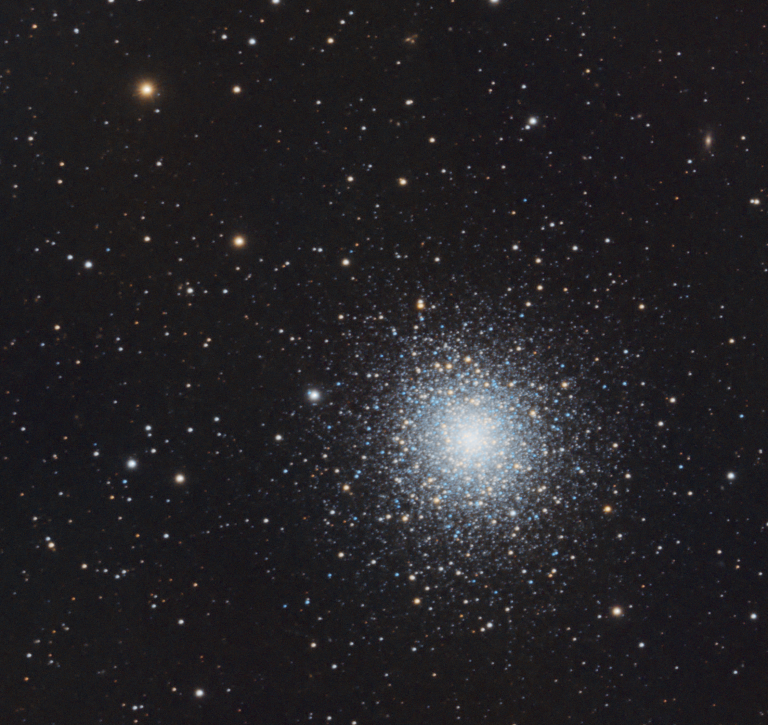
Globular cluster M92
Also in Hercules, M92 is often passed over for its larger and more dazzling neighbor, M13. But M92 is pretty in its own way! It’s also one of the oldest globular clusters in our galaxy (over 11 billion years old) and has some very interesting background galaxies around it too.

